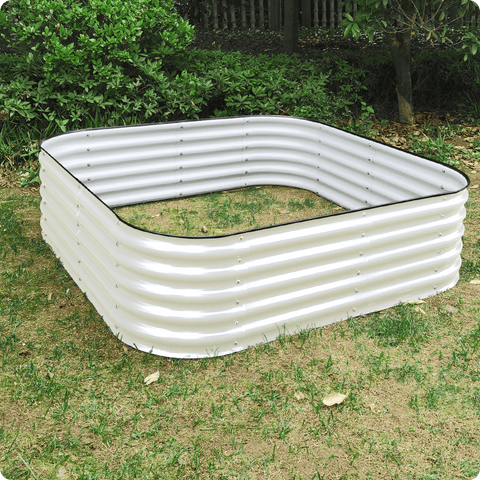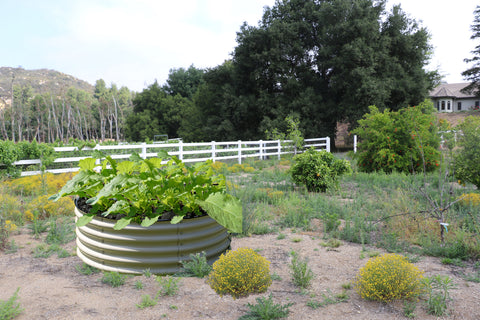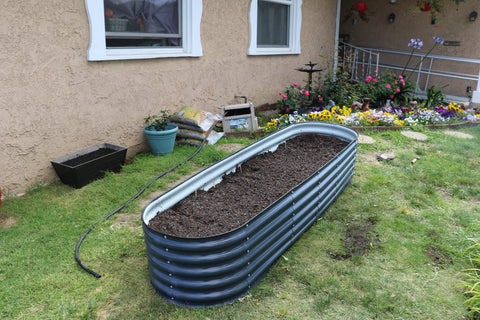Tips from Olle Garden Bed: Making Cleaning Easier In Fall
This autumn's housework is easy when you know how to do it correctly. You can also use this method to clean the autumn leaves in the raised garden bed.
Trees and shrubs are an amazing sight in all their brilliant autumn decorations. Those leaves soaked in color will eventually fall to the ground, where you may find them less popular. Raking leaves is at the top of most autumn garden to-do lists, which can be quite labor-intensive and time-consuming. However, dealing with fallen leaves is not necessarily a pain (sometimes literally). When you know how to rake correctly, or even how to avoid raking completely, you will have more time to enjoy the last backyard football match before the last campfire or snowflakes of this season. Use these leaf raking techniques to quickly clear the fall.

- Do you really need a rake?
Leaves have nutrients that can be recycled into your soil. When they pile up too thick, problems arise, which can suffocate your lawn and smaller garden plants. But how much is too much? University researchers have developed guidelines to understand if you need a rake. If less than 50% of the leaves cover the lawn, you do not need a rake, but it is recommended that you run the mower on the leaves to cut them up. More than 50% leaf coverage? It's time to get the rake out!
- Run the mower.
For lawns with 50% or less leaf coverage, use a lawn mower to help decompose the leaves and return nutrients and organic matter to the lawn. Just place the mower on the leaves. It may take several passes to get a beautiful seal, especially if you have large leaves, such as maple, oak and wutong. The small leaves will settle between the grass leaves, where they will decompose over time. If your mower has bagged accessories, you can use it to easily collect leaves. Then add them to the compost heap, use them as garden coverings around plants that need winter protection, or dispose of them through the yard waste passages in your area.

- Wait for all the leaves to fall.
It may be easy to start raking and start immediately when the leaves begin to fall. But remember, a few leaves on the lawn won't hurt anything. Instead, save yourself time by waiting for most of the leaves of trees and shrubs to come to the ground. Then divide the work into several sections by raking part of the lawn at a time.
- Select a suitable rake tool.
Comfort and ease of use are the first choices for leaf harrows. The handle should be long enough for you to stand upright when raking. Rakes with durable steel teeth are generally more popular than those with plastic teeth. Look for a harrow marked "no clog" to avoid the drudgery of removing the leaves stuck in the teeth every few strokes. A pair of gloves will help protect your hands from blisters at work.

- Stretch first.
Although the rake may seem simple, it may have physical stress even for healthy people. The American Academy of Orthopaedic Surgeons (AAOS) recommends stretching to warm up your muscles for 10 minutes before performing moderate intensity activities such as raking. Take time to stretch your shoulders, arms and neck; Do some squats; Then take a quick walk. Stretching before raking can help avoid the pain and pain after housework.
- Do some small movements and have a rest.
Raking may be a good way to do a little exercise, but it will feel more pleasant if you don't exercise too much. Sweeping with a rake will soon make you tired. Instead, use a short stroke to make sure your back is straight. Switch the rake from left to right of your body every few minutes to rest your main arms and shoulders. Every once in a while, put down your rake and have a rest. Take a breath, drink a glass of water and enjoy the brisk autumn weather.

- Take advantage of wind power generation.
When there is a strong wind, quarrelling leaves can be comic and crazy. Of course, calm weather is best for raking, but Mother Nature may not always work with your weekend plans. When you can't avoid raking in the noisy days, instead of fighting with the wind, try to use it. If the wind pushes the leaves south, so will you and your rake. Short rake travel and small piles are most effective on windy days.
